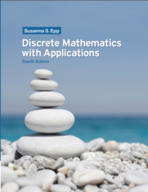An urn contains 25 red balls and 15 blue balls. Two are
Chapter 9, Problem 6E(choose chapter or problem)
Problem 6E
An urn contains 25 red balls and 15 blue balls. Two are chosen at random, one after the other, without replacement.
a. Use a tree diagram to help calculate the following probabilities: the probability that both balls are red, the probability that the first ball is red and the second is not, the probability that the first ball is not red and the second is red, the probability that neither ball is red.
b. What is the probability that the second ball is red?
c. What is the probability that at least one of the balls is red?
Unfortunately, we don't have that question answered yet. But you can get it answered in just 5 hours by Logging in or Becoming a subscriber.
Becoming a subscriber
Or look for another answer
